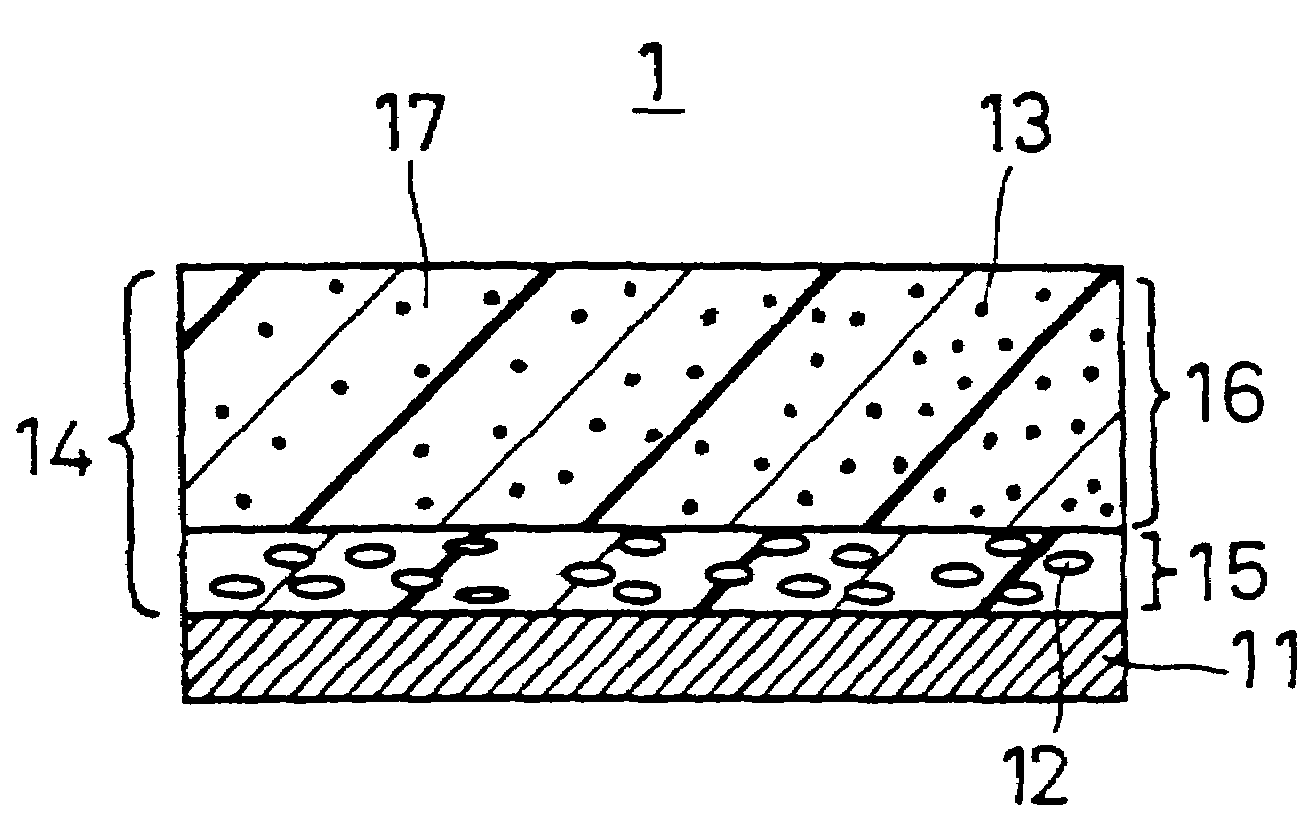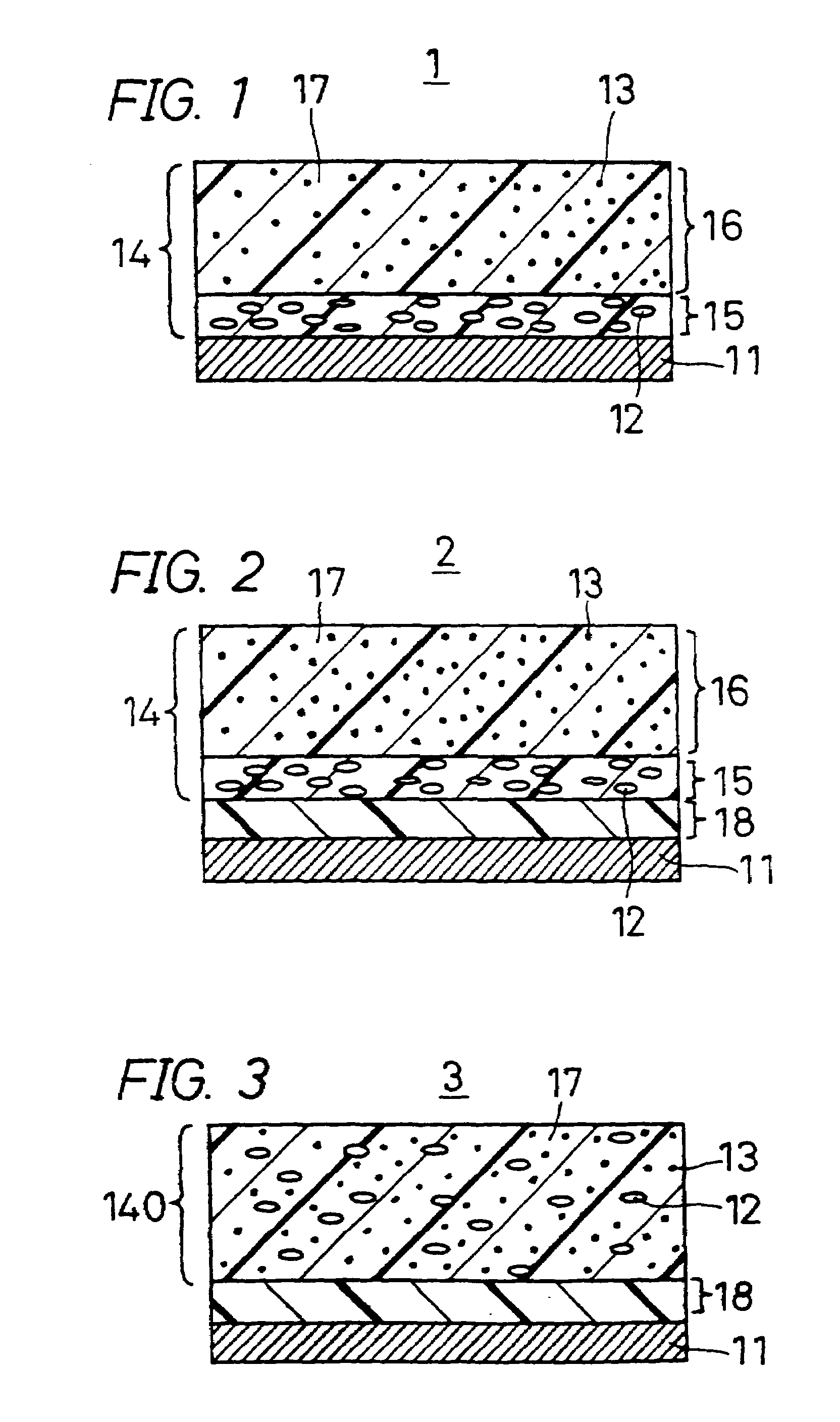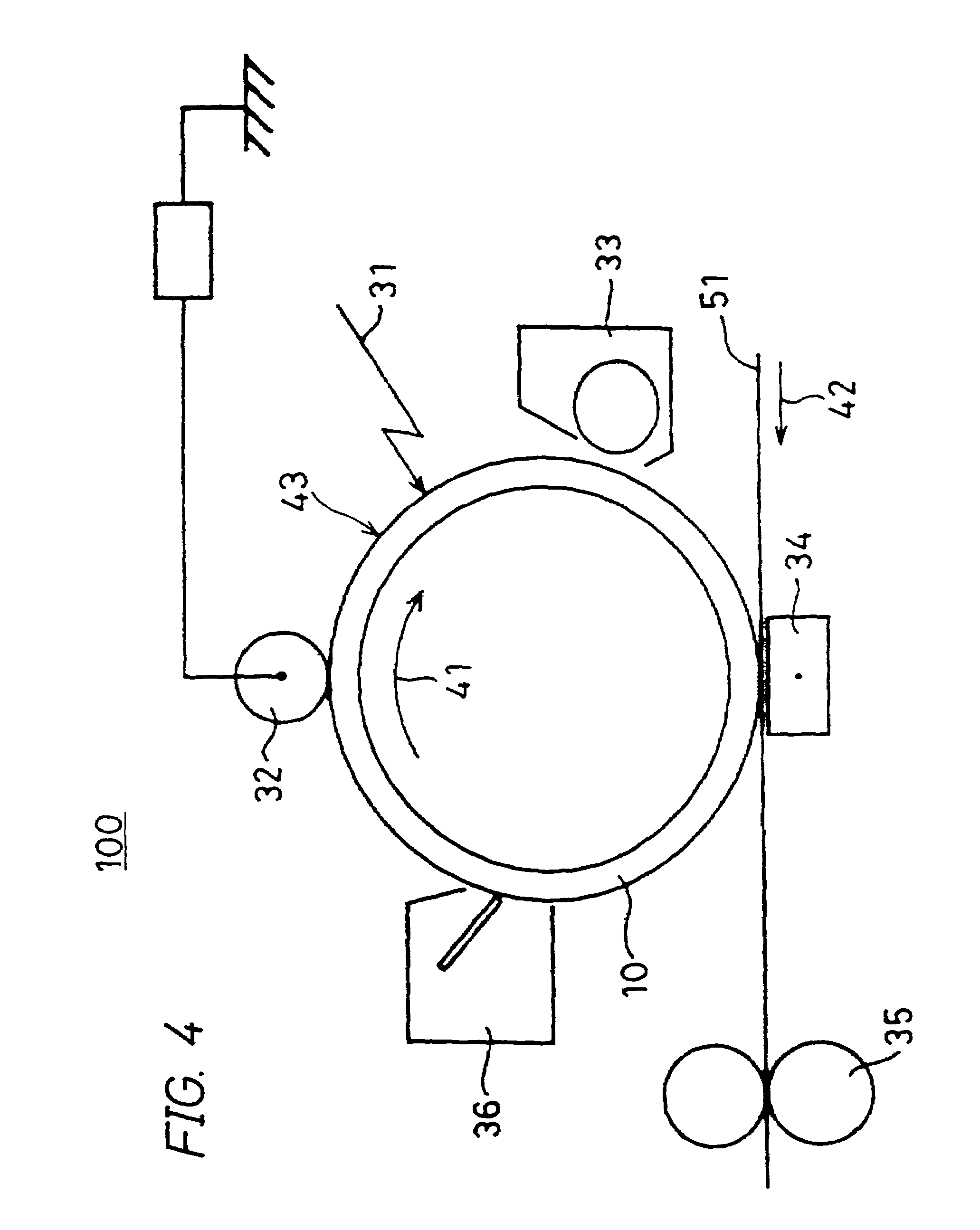Organic photoconductive material, electrophotographic photoreceptor comprising the same, and image-forming apparatus
- Summary
- Abstract
- Description
- Claims
- Application Information
AI Technical Summary
Benefits of technology
Problems solved by technology
Method used
Image
Examples
production example 1
Production of Compound No. 1
Production Example 1
Production of Enamine Intermediate
[0192]23.3 g (1.0 equivalent) of N-(p-tolyl)-α-naphthylamine of the following structural formula (8), 20.6 g (1.05 equivalents) of diphenylacetaldehyde of the following structural formula (9), and 0.23 g (0.01 equivalents) of DL-10-camphorsulfonic acid were added to 100 ml of toluene and heated, and these were reacted for 6 hours while the side-product, water was removed out of the system through azeotropic distillation with toluene. After thus reacted, the reaction solution was concentrated to about 1 / 10, and gradually and dropwise added to 100 ml of hexane that was vigorously stirred, and this gave a crystal. The crystal was taken out through filtration, and washed with cold ethanol to obtain 36.2 g of a pale yellow powdery compound.
[0193]
[0194]Thus obtained, the compound was analyzed through liquid chromatography-mass spectrometry (LC-MS), which gave a peak at 412.5 corresponding to the molecular io...
production example 1-2
Production of Enamine-Aldehyde Intermediate
[0197]9.2 g (1.2 equivalents) of phosphorus oxychloride was gradually added to 100 ml of anhydrous N,N-dimethylformamide (DMF) and stirred for about 30 minutes to prepare a Vilsmeier reagent. 20.6 g (1.0 equivalent) of the enamine intermediate of formula (10) obtained in Production Example 1-1 was gradually added to the solution with cooling with ice. Next, this was gradually heated up to 80° C., and stirred for 3 hours while kept heated at 80° C. After thus reacted, the reaction solution was left cooled, and then this was gradually added to 800 ml of cold 4 N aqueous sodium hydroxide solution to form a precipitate. Thus formed, the precipitate was collected through filtration, well washed with water, and then recrystallized from a mixed solvent of ethanol and ethyl acetate to obtain 20.4 g of an yellow powdery compound.
[0198]Thus obtained, the compound was analyzed through LC-MS, which gave a peak at 440.5 corresponding to the molecular io...
production example 1-3
Production of Compound No. 1
[0201]8.8 g (1.0 equivalent) of the enamine-aldehyde intermediate of formula (11) obtained in Production Example 1-2, and 6.1 g of diethyl cinnamylphosphonate of the following structural formula (12) were dissolved in 80 ml of anhydrous DMF, and 2.8 g (1.25 equivalents) of potassium t-butoxide was gradually added to the solution at room temperature, then heated up to 50° C., and stirred for 5 hours while kept heated at 50° C. The reaction mixture was left cooled, and poured into excess methanol. The deposit was collected, and dissolved in toluene to prepare a toluene solution thereof. The toluene solution was transferred into a separating funnel and washed with water, and the organic layer was taken out. Thus taken out, the organic layer was dried with magnesium sulfate. Solid matter was removed from the thus-dried organic layer, which was then concentrated and subjected to silica gel column chromatography to obtain 10.1 g of an yellow crystal.
[0202]
[0203...
PUM
 Login to View More
Login to View More Abstract
Description
Claims
Application Information
 Login to View More
Login to View More - R&D
- Intellectual Property
- Life Sciences
- Materials
- Tech Scout
- Unparalleled Data Quality
- Higher Quality Content
- 60% Fewer Hallucinations
Browse by: Latest US Patents, China's latest patents, Technical Efficacy Thesaurus, Application Domain, Technology Topic, Popular Technical Reports.
© 2025 PatSnap. All rights reserved.Legal|Privacy policy|Modern Slavery Act Transparency Statement|Sitemap|About US| Contact US: help@patsnap.com



